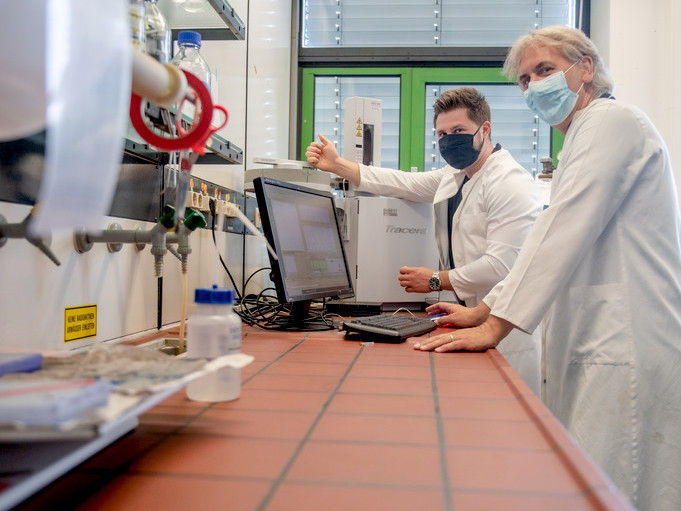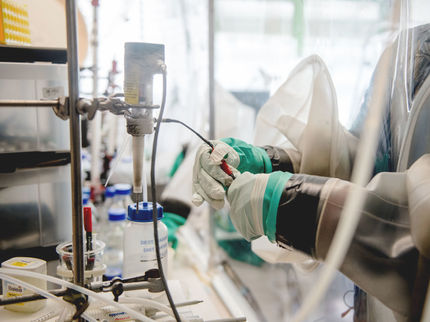New kind of interaction discovered in hydrogen-producing enzymes
The findings should help to develop more efficient miniaturised hydrogenase catalysts in the future
Advertisement
In hydrogenase enzymes, the transports of protons and electrons have been considered to be separate events until now. However, coupling is the key to success here.

The Bochum-based team has gained new insights into the function of hydrogen-producing enzymes, such as those found in green algae.
© RUB, Marquard
Hydrogenases can convert hydrogen just as efficiently as expensive platinum catalysts. In order to make them usable for biotechnological applications, researchers are deciphering how they work in detail. A team from Ruhr-Universität Bochum and the University of Oxford now reports in the journal “Proceedings of the National Academy of Sciences” (PNAS) that the transfer of protons and electrons by the enzyme takes place spatially separated, but is nevertheless coupled and thus, a decisive factor for efficiency.
Most efficient hydrogen producers
The so called class of [FeFe]-hydrogenases, which are for example found in green algae, are nature’s most efficient hydrogen producers. They can both produce and split hydrogen. The actual chemical reaction takes place at the active site buried deep inside the enzyme. “The electrons and protons required for the reaction must therefore find an efficient way to get there,” explains Dr. Oliver Lampret from the Photobiotechnology Research Group in Bochum, one of the authors of the paper. Electron transport takes place via an electric wire, so to speak, consisting of several iron-sulphur clusters. The protons are transported to the active centre via a proton transfer pathway consisting of five amino acids and one water molecule.
“Although it was known that there was a proton-coupled electron transfer mechanism, researchers had so far assumed that the coupling only takes place at the active centre itself,” says Professor Thomas Happe, Head of the Photobiotechnology Research Group.
Protein engineering makes coupling visible
The team manipulated the hydrogenases in such a way that the proton transfer was significantly slower, but hydrogen could still be converted. Using dynamic electrochemistry, they showed that hydrogen conversion decreased significantly and more importantly, significant overpotentials were needed to catalyse the production or splitting of hydrogen. By manipulating the proton transfer pathway, the researchers had indirectly reduced the rate of electron transfer.
“As the two transfer routes are spatially separated, we assume that a cooperative long-range coupling of both processes is necessary for efficient catalysis,” concludes Oliver Lampret. The findings should help to develop more efficient miniaturised hydrogenase catalysts in the future.

























































